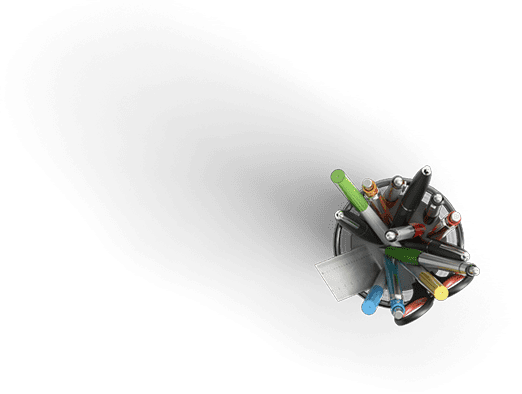Stanford University Economics Worksheet
Description
The questions below are designed to help you study for your TECEP. Answering these questions does
not guarantee a passing score on your exam.
Please note that the questions below will not appear on your exam.
Multiple-Choice
1. A rational decision maker does which of the following?
a. Takes an action only if the combined benefits of that action and previous actions exceed
the combined costs of that action and previous actions
b. Takes an action only if the marginal benefit of that action exceeds the marginal cost of
that action
c. Ignores marginal changes and focuses instead on “the big picture”
d. Ignores the likely effects of government policies when he or she makes choices
2. Economists generally believe that making assumptions is
a. a good idea, since doing so helps to simplify the complex world and make it easier to
understand
b. a good idea, since economic analysis without assumptions leads to complicated results
that the general public finds hard to understand
c. a bad idea, since doing so invariably leads to data-collection problems
d. a bad idea, since doing so leads to the omission of important ideas and variables from
economic models
3. Comparative advantage is based on
a. dollar price
b. labor cost
c. capitol cost
d. opportunity cost
4. In a market economy
a. demand determines supply and supply, in turn, determines prices
b. supply determines demand and demand, in turn, determines prices
c. supply and demand determine prices and prices, in turn, allocate the economyàscarce
resources
d. the allocation of scarce resources determines prices and prices, in turn, determine supply
and demand
TECEP Test Description for ECO-112-TE by Thomas Edison State University is licensed under a Creative Commons
Attribution-NonCommercial 4.0 International License.
5. If demand is price inelastic, then
a. buyers do not respond much to a change in price
b. buyers respond substantially to a change in price, but the response is very slow
c. buyers do not respond much to advertising, fads, or general changes in tastes
d. the demand curve is very flat
6. According to the graph on the right, the equilibrium price in the market before the tax is imposed
is
a. $3.50
b. $5.00
c. $6.00
d. $8.00
7. Market failure is the inability of
a. some unregulated markets to allocate
resources efficiently
b. a market to establish an equilibrium price
c. buyers to place a value on the good or
service
d. buyers to interact harmoniously with sellers
in the market
8. Claudia would be willing to pay as much as $100 per week to have her house cleaned. John’s
opportunity cost of cleaning Claudiaàhouse is $70 per week. Assume Claudia is required to pay
a tax of $40 when she hires someone to clean her house for a week. Which of the following is
correct?
a. Claudia will now clean her own house
b. John will continue to clean Claudiaàhouse, but his producer surplus will decline.
c. Claudia will continue to hire John to clean her house, but her consumer surplus will
decline.
d. Total economic welfare (consumer surplus plus producer surplus plus tax revenue) will
increase.
9. Within a country, the domestic price of a product will equal the world price if
a. trade restrictions are imposed on the product
b. the country chooses to import, but not export, the product
c. the country chooses to export, but not import, the product
d. the country allows free trade
TECEP Test Description for ECO-112-TE by Thomas Edison State University is licensed under a Creative Commons
Attribution-NonCommercial 4.0 International License.
10. Employing a lawyer to draft and enforce a private contract between parties wishing to solve an
externality problem is an example of a(n) ______________cost
a. opportunity
b. implicit
c. sunk
d. transaction
11. The government provides public goods because
a. private markets are incapable of producing these types of goods
b. free-riders make it difficult for private markets to supply the socially optimal quantity
c. markets are always better off with some government oversight
d. external benefits will accrue to private producers
12. To gauge the sacrifice made by a taxpayer, we should use the _____ tax rate.
a. marginal
b. average
c. sales
d. lump-sum
13. Since the 1980s, Wal-Mart stores have appeared in almost every community in America.
Wal-Mart buys its goods in large quantities and, therefore, at cheaper prices. Wal-Mart also
locates its stores where land prices are low, usually outside of the community business district.
Many customers shop at Wal-Mart because of low prices. Local retailers, like the neighborhood
drug store, often go out of business because they lose customers. This story demonstrates that
a. consumers do not react to changing prices
b. there are diseconomies of scale in retail sales
c. there are economies of scale in retail sales
d. there are diminishing returns to producing and selling retail goods
14. For any given price, a firm in a competitive market will maximize profit by selecting the level of
output at which price intersects the
a. average total cost curve
b. average variable cost curve
c. buyers marginal cost curve
d. marginal revenue curve
TECEP Test Description for ECO-112-TE by Thomas Edison State University is licensed under a Creative Commons
Attribution-NonCommercial 4.0 International License.
15. For a monopoly firm, which of the following equalities is always true?
a. Price = average revenue
b. Price = marginal revenue
c. Price = total revenue
d. Marginal revenue = marginal cost
16. When a firm operates with excess capacity
a. it must be a perfectly competitive firm
b. it must be a monopolistically competitive firm
c. additional production would increase the average total cost
d. additional production would lower the average total cost
17. Oligopolies can end up looking like competitive markets if the number of firms is
a. small and they all cooperate
b. small and they do not cooperate
c. large and they all cooperate
d. large and they do not cooperate
18. Which of the following would shift a market labor supply curve to the left?
a. Labor-augmenting technology
b. A change in worker tastes so that workers want to retire later
c. A decrease in the supply of factors such as capital
d. An increase in the wage paid to workers in a competing market
19. The belief that education makes a person more productive and thereby raises his or her wage is
referred to as the ________ view of education.
a. compensating-differential
b. human-capital
c. natural-ability
d. unmeasured-variables
TECEP Test Description for ECO-112-TE by Thomas Edison State University is licensed under a Creative Commons
Attribution-NonCommercial 4.0 International License.
20. Judging from the figure, a person that chooses to consume bundle C is likely to
a. receive higher total utility
than at point A
b. gain more satisfaction from
bundle C than bundle A
c. receive higher marginal utility
from Ho-Ho’s than from
Twinkies
d. receive higher marginal utility
from Twinkies than from
Ho-Hoü/p>

Have a similar assignment? "Place an order for your assignment and have exceptional work written by our team of experts, guaranteeing you A results."








